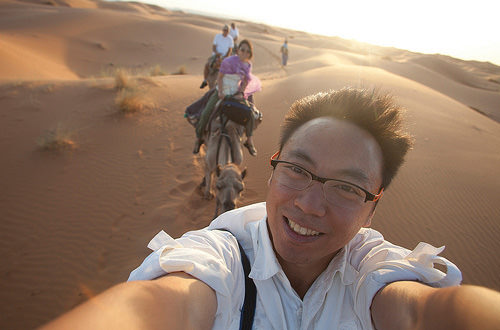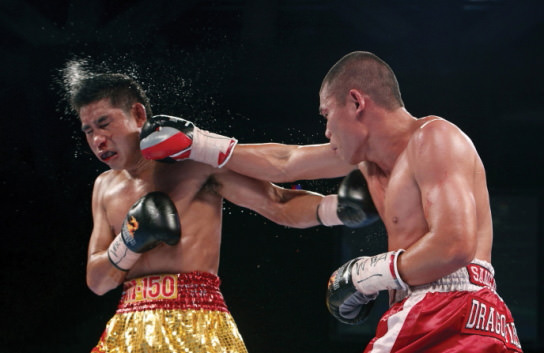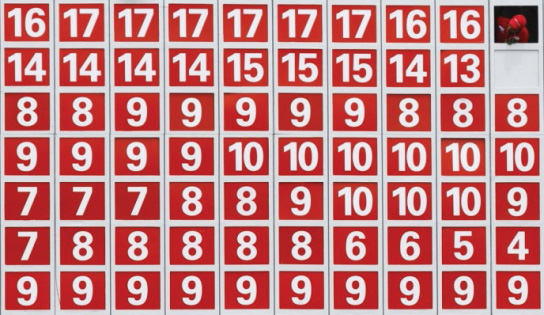Introduction to Fine Art Printing – Part 10: Interview with EOS Professional Edgar Su

1. Could you kindly give us a short introduction on your photographic journey?
I am an international photojournalist based in Singapore with about 10 years experience in the industry. My beat covers Southeast Asia in areas such as news, sports and entertainment. I love street photography as it helps me unwind and keeps me creative. I shoot mostly with my compact camera and smartphone. I got into printing this year because I felt that something was missing in my photographic experience. Images sitting in my hard disks and computer are meaningless if not brought to life in print.
2. Can you give a brief description of your creative process? What inspires you and why?
At work, the process is straightforward – tell an authentic photographic story with impact. But in my own personal photography projects, my subjects could range from the abstract to the whimsical. There is really no hard and fast rule in my personal photography. It’s all about fun.

3. When shooting with the intention to make a print, what are your considerations?
Technically, if you are making a big print, the image must be sharp. Tripod or choice of lens really depends on the kind of photography you are after. I don’t usually use a tripod because I like to travel light. If I were to make a long exposure photo, I will improvise by resting my camera on my camera bag. Most of my prints begin life in A4-size, as it helps me judge if they truly deserve a bigger canvas. My favourites will then be reprinted in A3. My holiday snapshots are usually printed in postcard, 4R or in Japanese 2L size. I am also toying with the idea of printing my Instagram photos as a pocket-size photo album.

4. Can you share the software you use for image editing?
I use Adobe Lightroom exclusively, because it’s a onestop software for all my needs. It has colour management tools, so you can load your paper ICC profiles and perform a soft proof to see a simulated print onscreen. Different paper types also require adjustments to the contrast and brightness of the image, for optimal ink density delivery. Adobe Lightroom is also a wonderful tool for managing your photo library. Sometimes it’s hard to keep track of what I shoot over the months, so I use a Smart Collection folder to keep track of a particular subject. For example, I can add a search filter like ‘red’ and all images that have been tagged red will appear in my Smart Collection. Real time saver! And in terms of photo toning or adjustments, Adobe Lightroom gives you the tools to crop, adjust your white balance, remove dust spots, fine-tune your black-and-white conversions etc.

5. Do you make use of colour management hardware to calibrate your screen and printer?
It is very important to make sure that your monitor is colour calibrated. I have used both Spyder5PRO and ColorMunki colourimeters and they do a great job. Ideally a colourimeter should incorporate ambient light compensation so the screen brightness is adjusted for the ambient light condition. Even with the most basic calibration on my Macbook Pro, it allows me to get satisfactory prints. Some monitors on the market also have built-in colour calibration systems.

6. What are your preferred printing settings and why?
I shoot and manage photos in AdobeRGB colour space and use Perceptual-rending intent option in Lightroom to print. I find photo-editing adjustments made in soft-proofing mode before printing produces great results.

7. When making a print, which printer do you use and why?
I use the Canon PIXMA PRO-10 printer as I really like the Wi-Fi feature. Wi-Fi printing allows me the freedom to work away from the printer when I need too. I also prefer pigment inks to dye inks. Pigment inks last longer and are usually found on higher-end printers. It is said that prints using pigment inks last at least 250 years while dye-based printers last about 100 years.

8. Which paper do you like most and why?
My preferred paper brands are Ilford and Pictorico. Both manufacturers provide ICC profiles for download and they stock a variety of papers of different weight and textures. I prefer heavyweight paper in the range of 280gsm to 310gsm, and they come in gloss, lustre, textured matte or smooth matte finishes. Pictorico has a high-gloss white film paper that looks glossy almost metallic after printing. Different subject matter, e.g. landscape or portraiture, will need different paper types.
High-gloss may work very well for photos that show water or liquids, but may not be so good for portraits. Some black-and-white photos are best printed on matte surfaces for that fine art look. There are also ultra thin Japanese kozo papers that are perfect for photos of flowers and landscapes. The paper manufacturer Awagami, offers a sample pack of 14 different kinds of paper with instructions on printer settings.
Click here to read more on: Selecting a Paper for Fine Art Prints

9. How do you keep or present your prints? And what are your reasons for doing so?
After printing all these photos I am faced with this problem – what do I do with them? I look for nice photo frames from lifestyle shops like Crate and Barrel, etc. I look for frames that match the print and also the decor of the house. IKEA sells many different types of frames and are really affordable. Custom frames are great but they are more expensive and are usually permanently framed. Even hanging the framed photos is an art in itself. Should I hang them neatly in a row? Or should I make a feature wall and hang a variety of different frame sizes and designs? Lots of things to think about, but it’s a fun weekend project nonetheless.
I also keep some fine art prints in archival grade folders and paper boxes to protect them from creases, dust and UV light. One day, these will be hanging in homes and cafes, but for now, I am hoarding them.

10. Do you have any other tips for budding photographers looking to produce fine art prints?
Yes. Think of an end goal. Avoid being a hoarder of prints like me. Find a photographic subject that interests you and work towards holding a small exhibition. You could try approaching the local library or city hall for exhibition space. If you are a budding nature photographer, you could even approach the National Park Agency in your country for support. At the very least, print your family photos and present them to loved ones – they are great mementos. Just DON’T keep them on your hard drive or Facebook. Print them!

11. Which is your favourite print you have produced so far and why?
For now, it’s a holiday photo I took recently in Hokkaido. It’s a photo of my wife and me standing in front of a strangely shaped cloud next to our rental car. I just placed the camera on the ground and set the self-timer. It turned out well and reminds me of the good times during our holiday. I guess that is why I like it so much.

12. And finally, why do you print?
Right now, I print because it’s fun. And I think on a personal photography level, this should be the end goal of why we take photos. To have something physical to hold on to. After all, Murphy’s Law dictates that hard disks and backup drives may someday break down, and I really dread the day when I have nothing to show as a professional photographer. It also helps improve my photo composition skills as looking at a framed print over time will reveal both its beauty and its flaws – a great source of learning. This is especially so for photos of very simple composition. There are probably many of these gems that I overlooked in those hard disks.
Receive the latest update on photography news, tips and tricks.
Be part of the SNAPSHOT Community.
Sign Up Now!
































